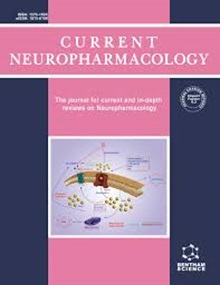诱导多能干细胞在中风治疗中的作用
IF 4.8
2区 医学
Q1 NEUROSCIENCES
引用次数: 0
摘要
中风是一种致残率和死亡率都很高的神经系统疾病。近 80% 的中风病例为缺血性中风,其余为出血性中风。唯一获批的缺血性中风治疗方法是溶栓和/或血栓切除术。然而,这些治疗方法并不能充分缓解疾病的结局,许多患者即使在有效溶栓后仍会致残。因此,有必要采用康复疗法来诱导大脑重塑。目前,干细胞移植,特别是通过使用诱导多能干细胞(iPSCs),被认为是刺激神经发生和大脑重塑的一种有前途的替代疗法。iPSCs 的生物功能与胚胎干细胞(ESCs)相似,包括免疫调节、减少脑血流量、脑水肿和自噬。虽然iPSC疗法在出血性和缺血性中风中发挥着良好的作用,但其应用也存在一定的局限性。肿瘤形成、免疫排斥、干细胞存活和迁移是与干细胞疗法相关的一些问题。因此,无细胞疗法作为一种替代方法可以克服这些限制。本研究回顾了iPSCs在中风模型中的治疗应用,以及这些细胞的潜在机制和限制因素。此外,还讨论了使用外泌体、凋亡体和微囊作为替代疗法的无细胞疗法。本文章由计算机程序翻译,如有差异,请以英文原文为准。
The Role of Induced Pluripotent Stem Cells in the Treatment of Stroke
Stroke is a neurological disorder with high disability and mortality rates. Almost 80% of stroke cases are ischemic stroke, and the remaining are hemorrhagic stroke. The only approved treatment for ischemic stroke is thrombolysis and/or thrombectomy. However, these treatments cannot sufficiently relieve the disease outcome, and many patients remain disabled even after effective thrombolysis. Therefore, rehabilitative therapies are necessary to induce remodeling in the brain. Currently, stem cell transplantation, especially via the use of induced pluripotent stem cells (iPSCs), is considered a promising alternative therapy for stimulating neurogenesis and brain remodeling. iPSCs are generated from somatic cells by specific transcription factors. The biological functions of iPSCs are similar to those of embryonic stem cells (ESCs), including immunomodulation, reduced cerebral blood flow, cerebral edema, and autophagy. Although iPSC therapy plays a promising role in both hemorrhagic and ischemic stroke, its application is associated with certain limitations. Tumor formation, immune rejection, stem cell survival, and migration are some concerns associated with stem cell therapy. Therefore, cell-free therapy as an alternative method can overcome these limitations. This study reviews the therapeutic application of iPSCs in stroke models and the underlying mechanisms and constraints of these cells. Moreover, cell-free therapy using exosomes, apoptotic bodies, and microvesicles as alternative treatments is discussed.
求助全文
通过发布文献求助,成功后即可免费获取论文全文。
去求助
来源期刊

Current Neuropharmacology
医学-神经科学
CiteScore
8.70
自引率
1.90%
发文量
369
审稿时长
>12 weeks
期刊介绍:
Current Neuropharmacology aims to provide current, comprehensive/mini reviews and guest edited issues of all areas of neuropharmacology and related matters of neuroscience. The reviews cover the fields of molecular, cellular, and systems/behavioural aspects of neuropharmacology and neuroscience.
The journal serves as a comprehensive, multidisciplinary expert forum for neuropharmacologists and neuroscientists.
 求助内容:
求助内容: 应助结果提醒方式:
应助结果提醒方式:


